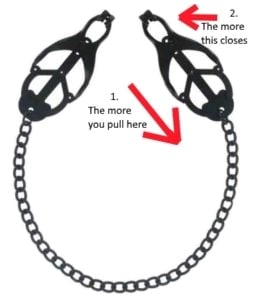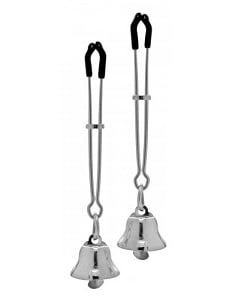Ask LSOP # 15 - What's the deal with all the clamps?

The following is the full Ask LSOP #15 question and answer, featured in the Little Shop of Pleasures May 2017 newsletter
Hi LSOP Experts,
What is the difference between the different kinds of nipple clamps? There are so many to choose from, and I have no clue where to start. Help!
-- Nipple Newbie
Dear Nipple Newbie,
You're right- there is a HUGE variety of nipple clamps out there, and just like nipples, they come in a wide range of shapes and sizes. We don't have the space to explain each style of clamp available, but we will take a look at the three major types of clamps that we carry. This is by no means a comprehensive nipple clamp education, but hopefully it is enough information to get you started on your search for the perfect nipple clamp.
|
Clover/Butterfly Clamp
Last, but definitely not least, is the "clover" or "butterfly" clamp, a Japanese design that is absolutely punishing. They have a spring device that holds the clamps onto the nipple initially, but the diabolical design of these devious little devices is such that the more you pull on the end, the tighter the clamps close around the nipple. Advanced users may add weights to the end of the clamps to apply extreme pressure. Clover/butterfly clamps can also be used to keep a bondage bottom in one place- by tying the clamps to something solid, the person can not pull away without the clamps closing tighter on the nipple. This is one of the most advanced types of nipple clamp available at our store and are definitely not for beginners.
|
 |
All of these types of clamps come in a variety of styles- some functional and some purely aesthetic. Some have chains that connect the two clamps together, or to a collar, cock ring, or a third genital clamp. Some have decorative baubles, like beads, feathers, or bells, like the tweezer clamps pictured above.
Interested in appearing (anonymously) in the Ask LSOP section of next month’s newsletter? Submit your questions about relationships, sex, adult toys, or lingerie, and our team of sexperts will find you the answers! Email your questions to [email protected] with the subject header “Ask LSOP”.





Comments
Be the first to comment...